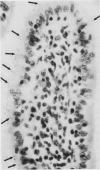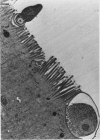Abstract
Young pigs raised on a pentachlorophenol-treated wooden floor showed a high mortality. The deaths ceased when the original treated wood was covered with untreated plywood. Analysis of the wood, mother's milk, and young pig tissues was carried out for pentachlorophenol and chlorinated dibenzo-p-dioxins. Pentachlorophenol was found in the wood and mother's milk but not in the young pig tissues. Concentrations of the higher chlorinated dioxins were found in the wood at the ppm level, in the mother's milk at the low ppt level and in the skin and liver of the young pigs at the ppb level. A comparison of the concentrations of hexa-and hepta-dioxin isomers in the wood, and in the piglet skin and liver indicated that a selective absorption and/or metabolism of these isomers had occurred. The results of this case history implicate the higher chlorinated dioxins in the mortality of the young pigs and underline the danger of using technical pentachlorophenol for wood treatment in association with food producing animals.
Full text
PDF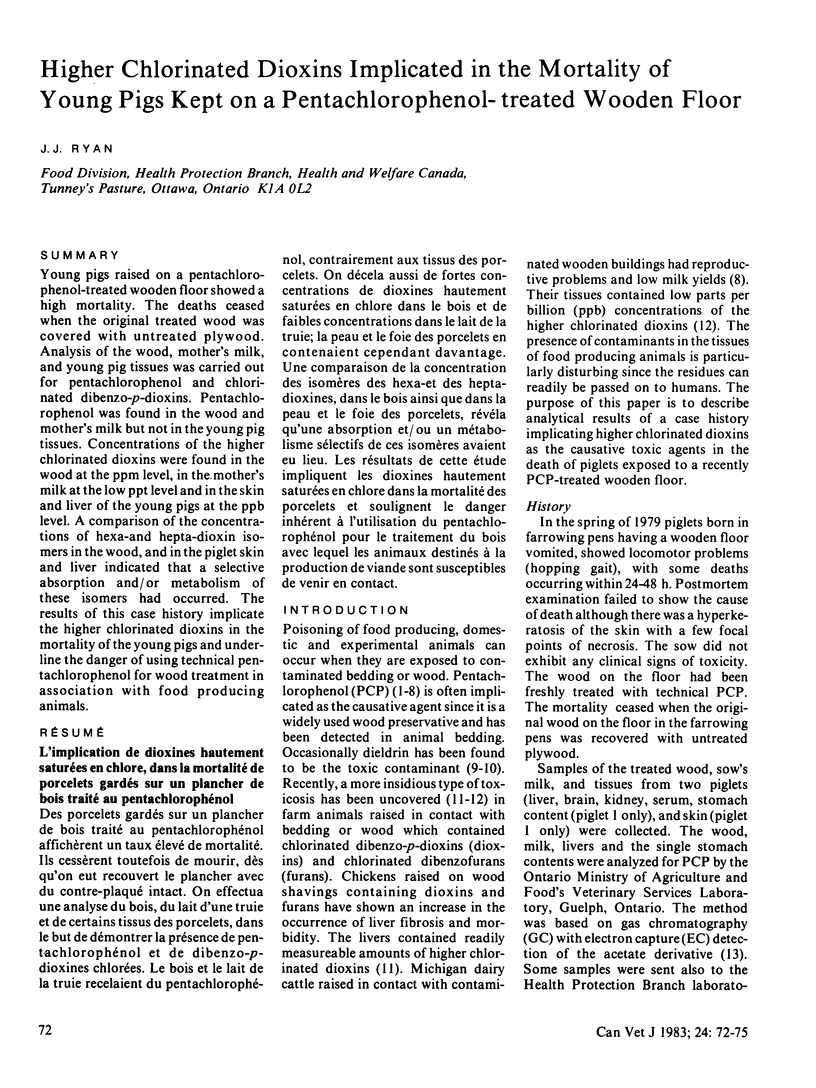
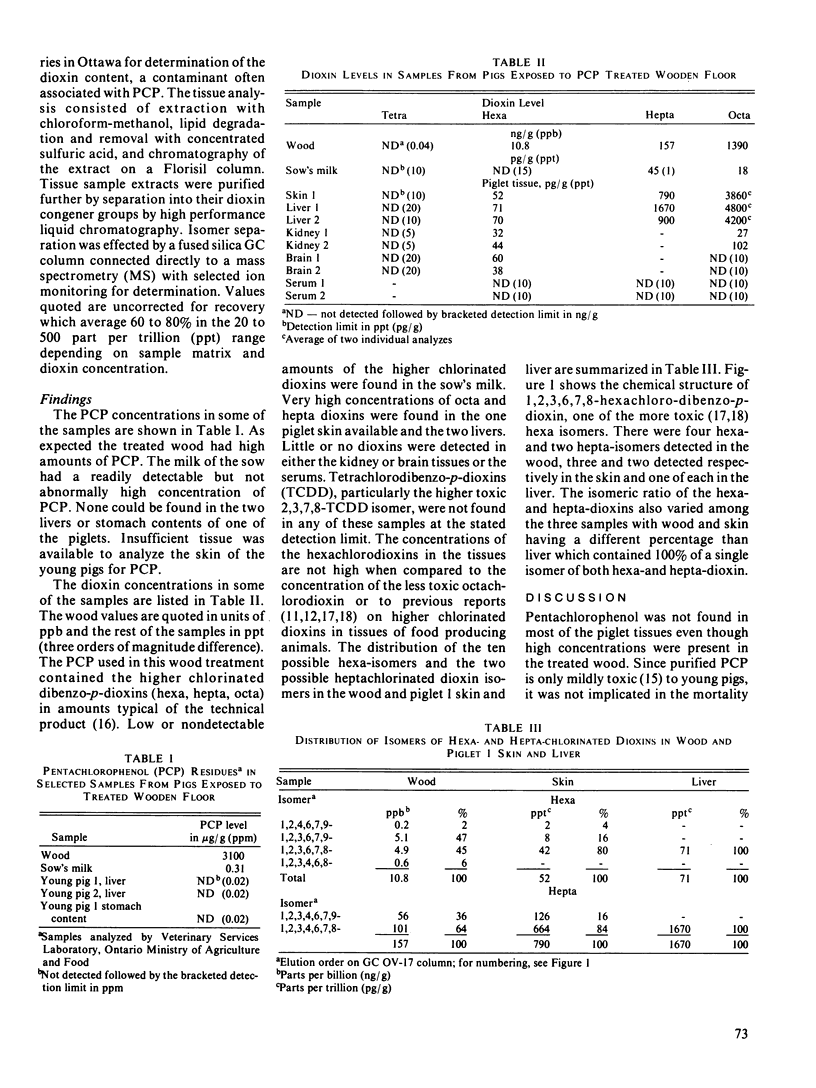
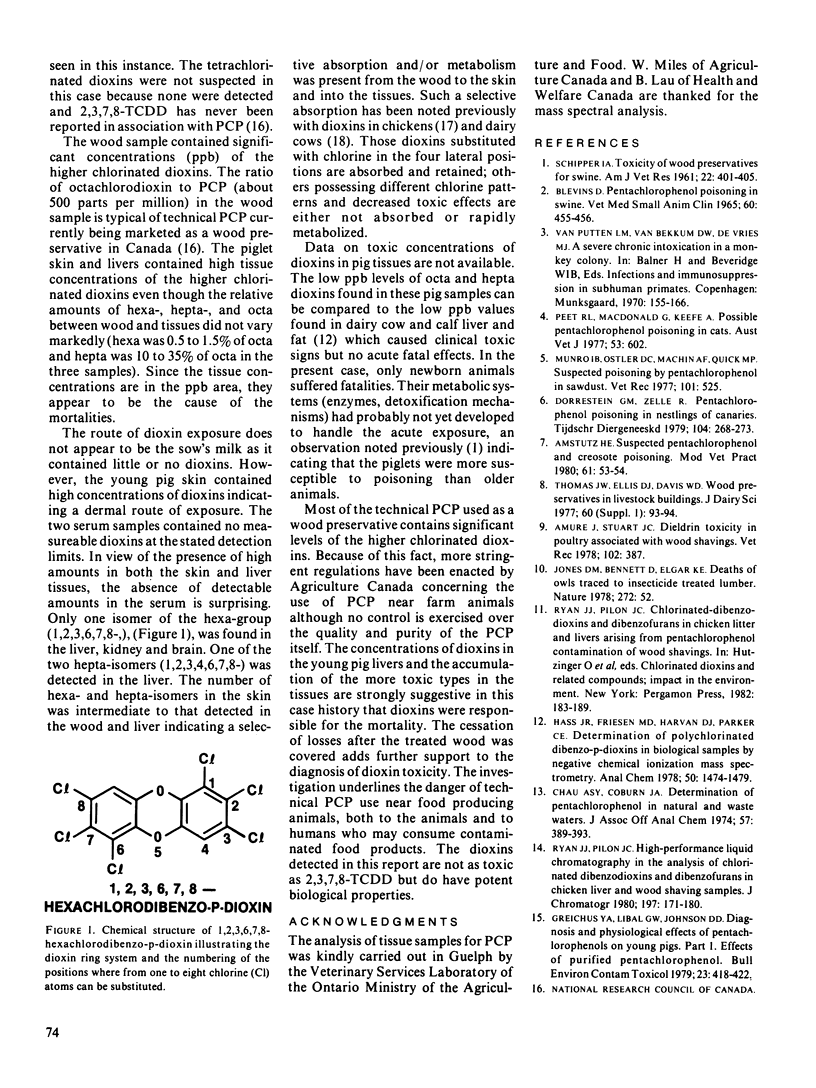
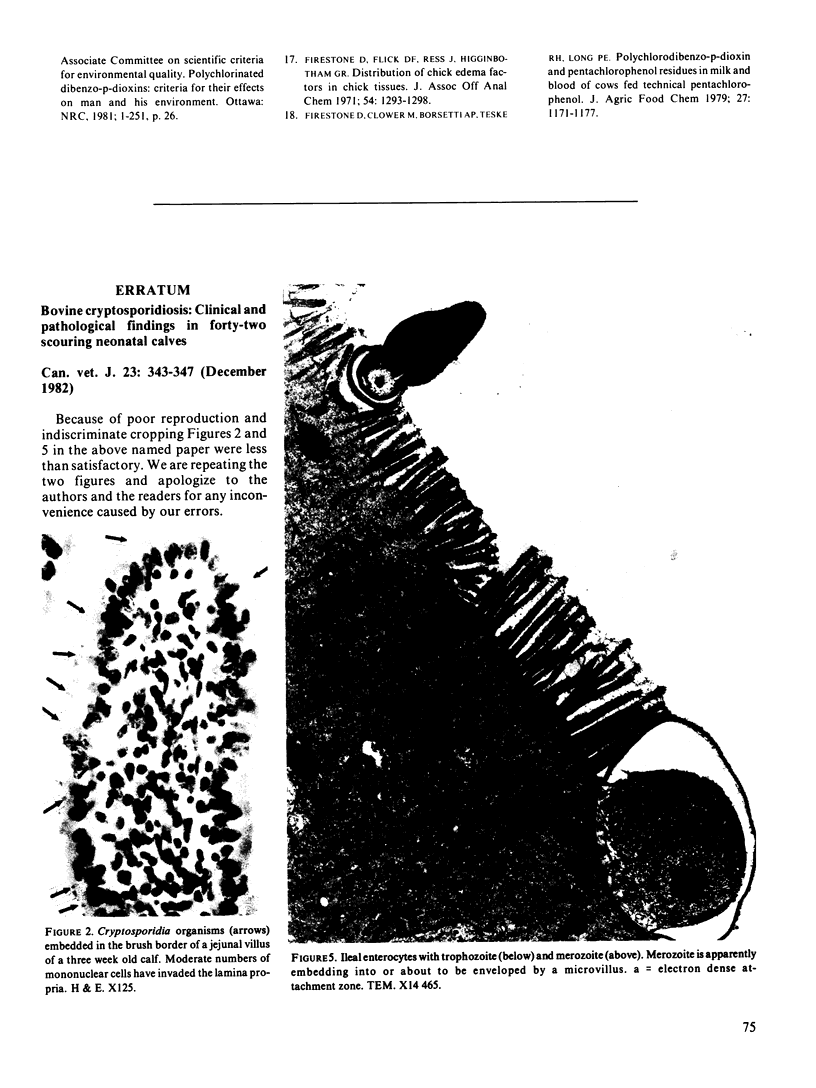
Images in this article
Selected References
These references are in PubMed. This may not be the complete list of references from this article.
- Amstutz H. E. Suspected pentachlorophenol and creosote poisoning. Mod Vet Pract. 1980 Jan;61(1):53–54. [PubMed] [Google Scholar]
- Amure J., Stuart J. C. Dieldrin toxicity in poultry associated with wood shavings. Vet Rec. 1978 Apr 29;102(17):387–387. doi: 10.1136/vr.102.17.387-b. [DOI] [PubMed] [Google Scholar]
- BLEVINS D. PENTACHLOROPHENOL POISONING IN SWINE. Vet Med Small Anim Clin. 1965 May;60:455–455. [PubMed] [Google Scholar]
- Chau A. S., Coburn J. A. Determination of pentachlorophenol in natural and waste waters. J Assoc Off Anal Chem. 1974 Mar;57(2):389–393. [PubMed] [Google Scholar]
- Dorrestein G. M., Zelle R. Pentachloorphenol intoxicatie bij nestjongen van kanaries (Serinus canarius). Tijdschr Diergeneeskd. 1979 Mar 15;104(6):268–273. [PubMed] [Google Scholar]
- Firestone D., Clower M., Jr, Borsetti A. P., Tseke R. H., Long P. E. Polychlorodibenzo-p-dioxin and pentachlorophenol residues in milk and blood of cows fed technical pentachlorophenol. J Agric Food Chem. 1979 Nov-Dec;27(6):1171–1177. doi: 10.1021/jf60226a075. [DOI] [PubMed] [Google Scholar]
- Greichus Y. A., Libal G. W., Johnson D. D. Diagnosis and physiologic effects of pentachlorophenols on young pigs. Part I. Effects of purified pentachlorophenol. Bull Environ Contam Toxicol. 1979 Oct;23(3):418–422. doi: 10.1007/BF01769981. [DOI] [PubMed] [Google Scholar]
- Hass J. R., Friesen M. D., Harvan D. J., Parker C. E. Determination of polychlorinated dibenzo-p-dioxins in biological samples by negative chemical ionization mass spectrometry. Anal Chem. 1978 Sep;50(11):1474–1479. doi: 10.1021/ac50033a023. [DOI] [PubMed] [Google Scholar]
- Jones D. M., Bennett D., Elgar K. E. Deaths of owls traced to insecticide-treated timber. Nature. 1978 Mar 2;272(5648):52–52. doi: 10.1038/272052a0. [DOI] [PubMed] [Google Scholar]
- Peet R. L., MacDonald G., Keefe A. Possible pentachlorophenol poisoning in cats. Aust Vet J. 1977 Dec;53(12):602–602. doi: 10.1111/j.1751-0813.1977.tb15846.x. [DOI] [PubMed] [Google Scholar]
- SCHIPPER I. A. Toxicity of wood preservatives for swine. Am J Vet Res. 1961 May;22:401–405. [PubMed] [Google Scholar]



